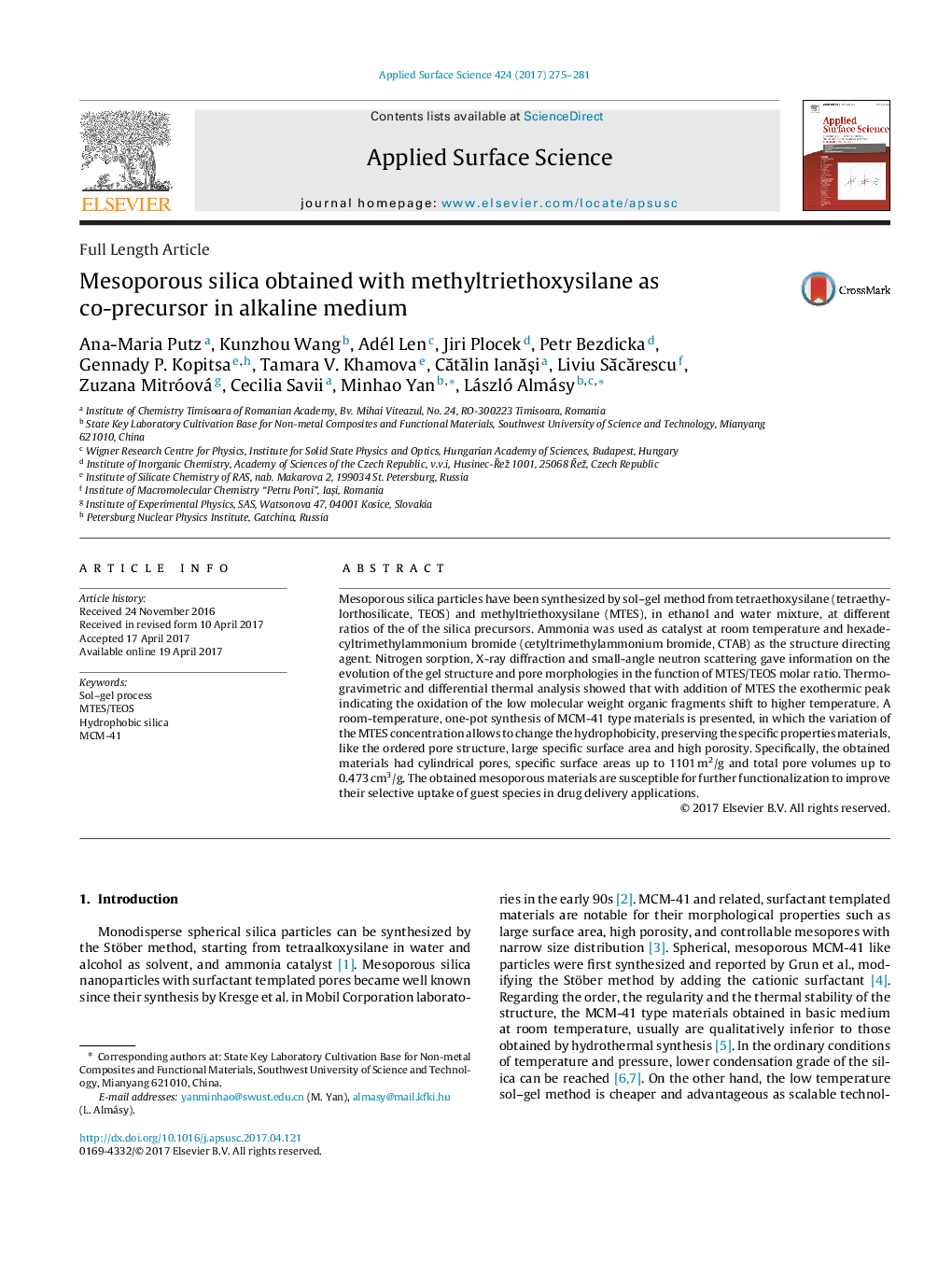| Article ID | Journal | Published Year | Pages | File Type |
|---|---|---|---|---|
| 5351285 | Applied Surface Science | 2017 | 7 Pages |
Abstract
Mesoporous silica particles have been synthesized by sol-gel method from tetraethoxysilane (tetraethylorthosilicate, TEOS) and methyltriethoxysilane (MTES), in ethanol and water mixture, at different ratios of the of the silica precursors. Ammonia was used as catalyst at room temperature and hexadecyltrimethylammonium bromide (cetyltrimethylammonium bromide, CTAB) as the structure directing agent. Nitrogen sorption, X-ray diffraction and small-angle neutron scattering gave information on the evolution of the gel structure and pore morphologies in the function of MTES/TEOS molar ratio. Thermogravimetric and differential thermal analysis showed that with addition of MTES the exothermic peak indicating the oxidation of the low molecular weight organic fragments shift to higher temperature. A room-temperature, one-pot synthesis of MCM-41 type materials is presented, in which the variation of the MTES concentration allows to change the hydrophobicity, preserving the specific properties materials, like the ordered pore structure, large specific surface area and high porosity. Specifically, the obtained materials had cylindrical pores, specific surface areas up to 1101Â m2/g and total pore volumes up to 0.473Â cm3/g. The obtained mesoporous materials are susceptible for further functionalization to improve their selective uptake of guest species in drug delivery applications.
Related Topics
Physical Sciences and Engineering
Chemistry
Physical and Theoretical Chemistry
Authors
Ana-Maria Putz, Kunzhou Wang, Adél Len, Jiri Plocek, Petr Bezdicka, Gennady P. Kopitsa, Tamara V. Khamova, CÄtÄlin IanÄÅi, Liviu SÄcÄrescu, Zuzana Mitróová, Cecilia Savii, Minhao Yan, László Almásy,
